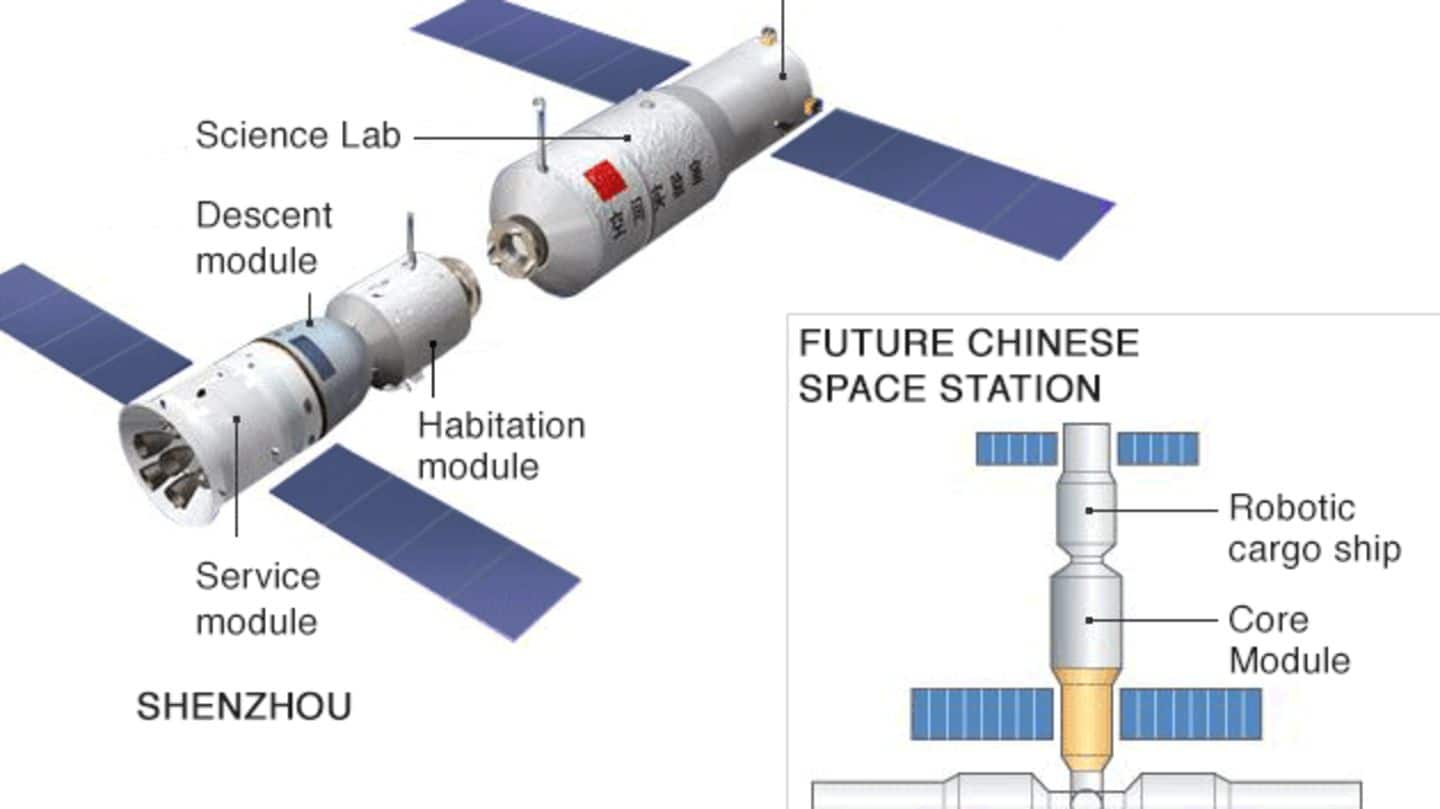
Chinese space-lab falls back to Earth, breaks-up over Pacific Ocean
What's the story
China's now-defunct space station Tiangong-1 has re-entered the Earth's atmosphere above the South Pacific, according to reports. Chinese officials pegged the time of re-entry at 00:15 GMT on Monday. The date of Tianong-1's re-entry has coincided with earlier estimations. Since the space lab crashed to Earth during the daytime, it's unlikely for anyone to have captured any amateur images of the vessel's re-entry.
Details
The space station disintegrates upon re-entering the Earth
According to the China Manned Space Agency, "Most parts were burned up in the re-entry process." It is still not clear how much debris was intact when it reached the Earth's surface. Providing more exact information regarding the vague "above the South Pacific" re-entry, astronomer Jonathan McDowell from the Harvard-Smithsonian Center for Astrophysics said Tinagong-1 appeared to have come down north-west of Tahiti.
Context
China's first space station Tiangong-1 was launched in 2011
Earlier in 2016, China had admitted that it had lost control of the space station, which then proceeded to hurtle towards the Earth in an uncontrolled re-entry. Tiangong-1, which literally means 'heavenly palace,' was launched in 2011. Used for both manned and unmanned missions, it was visited by China's first female astronaut Liu Yang in 2012.
Estimations
China wrongly predicted the re-entry to be off Brazil
Earlier, the Chinese space agency had wrongly predicted that the space station would be off Sao Paulo, Brazil. On the other hand, the European Space Agency (ESA) had said that Tiangong-1 would break up over water. "The probability of being injured by one of Tiangong-1's fragments is similar to the probability of being hit by lightning twice in the same year," ESA had said.
Twitter Post
The space station weighed 8.5 tonne
By my calculations, Tiangong-1 will be the 50th most massive uncontrolled reentry from Earth orbit in history.
— Jonathan McDowell (@planet4589) March 25, 2018
Information
China has already launched Tiangong-2
Since losing control of Tiangong-1, China has launched Tiangong-2, a space station which is currently operational. It was re-fuelled last year and is expected to be a permanent space station with a large core module and two smaller ancillary modules by early next decade.